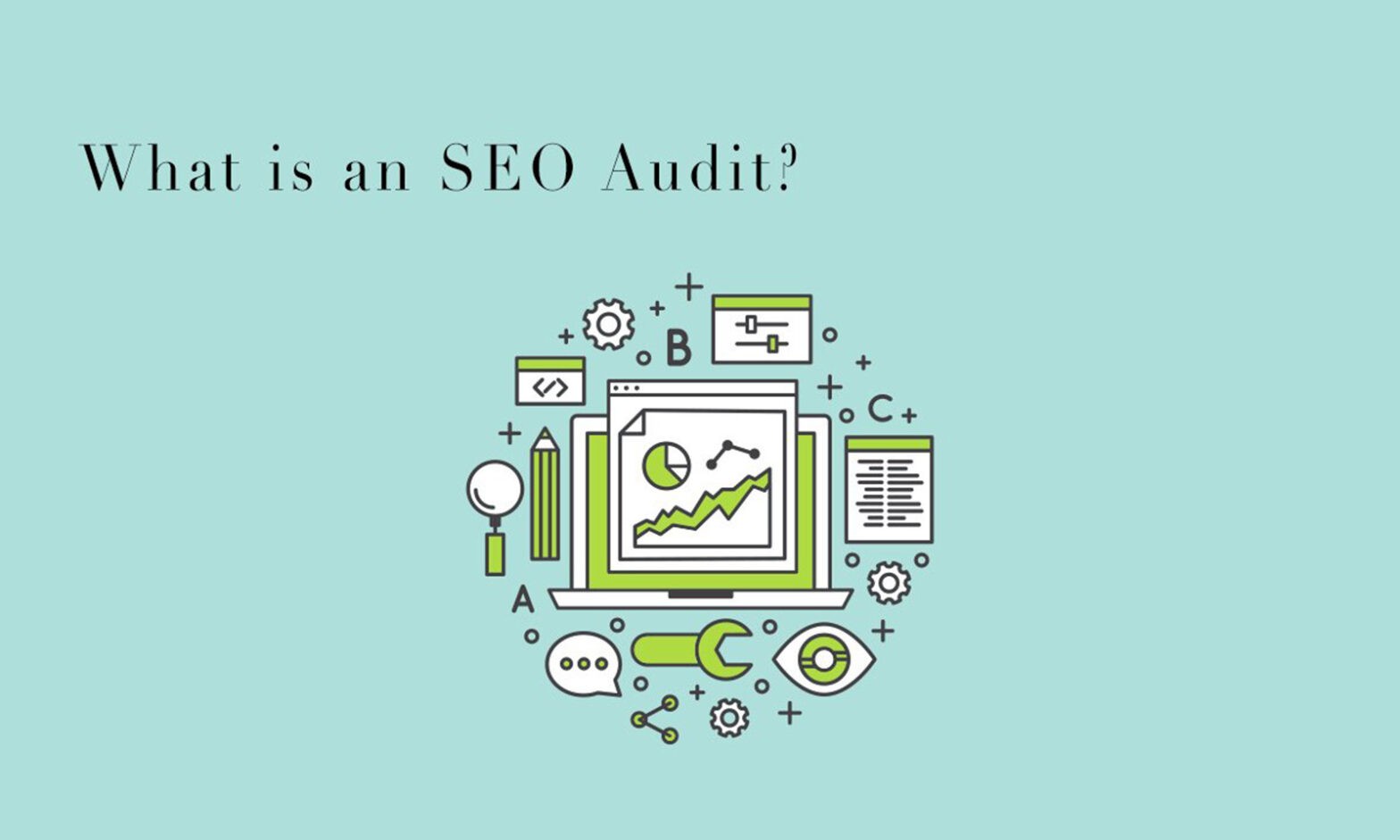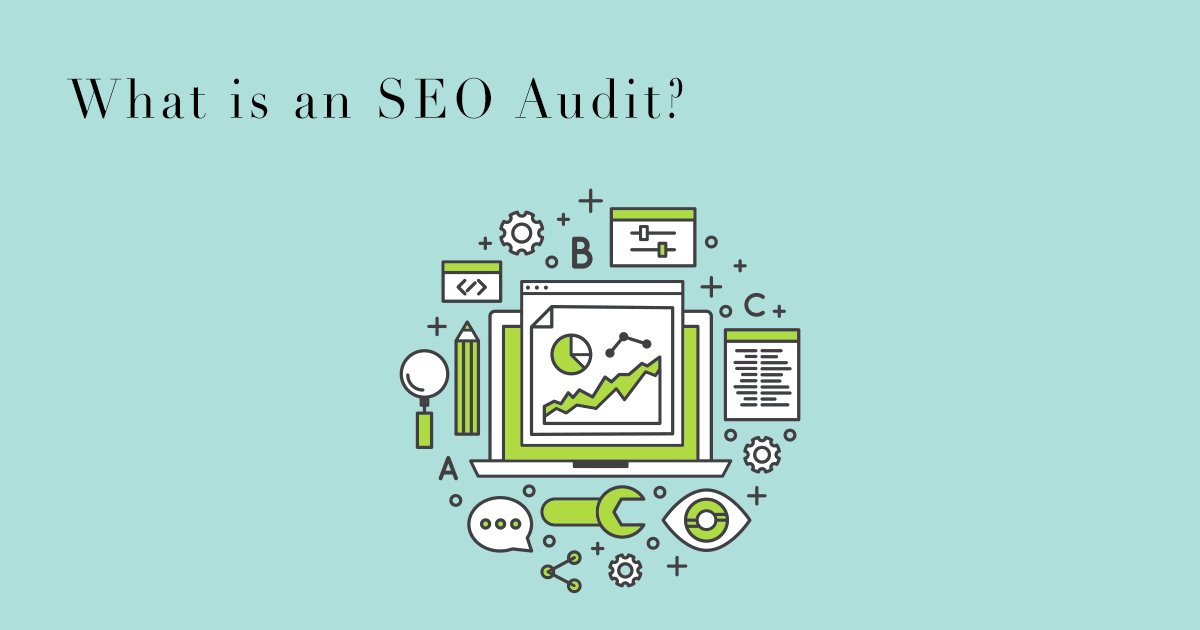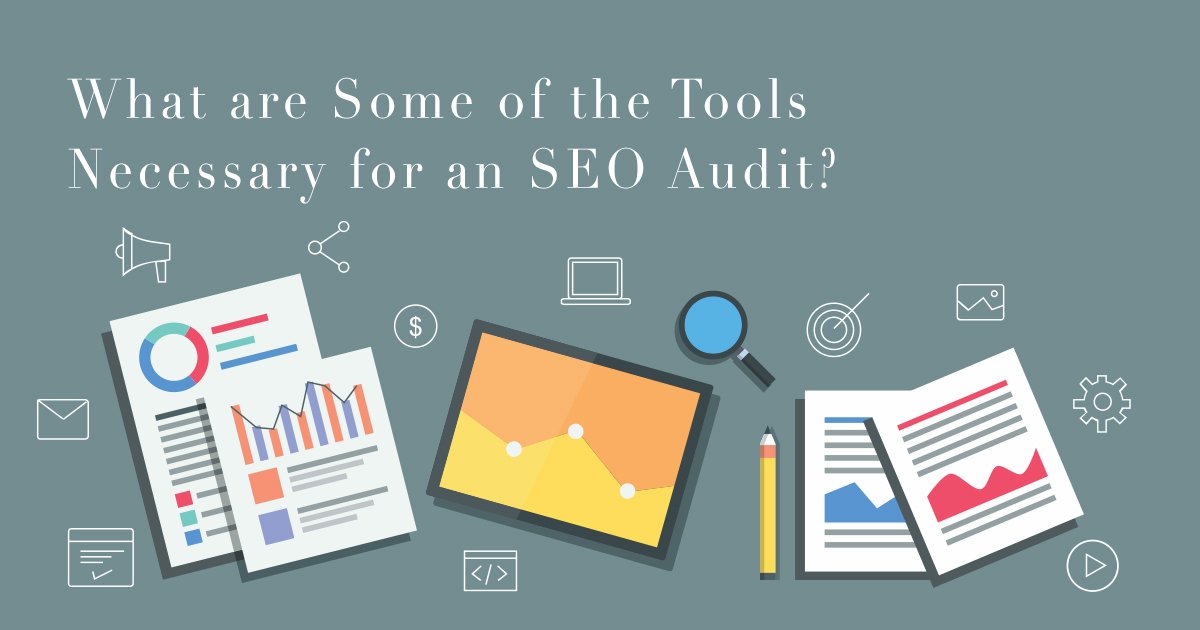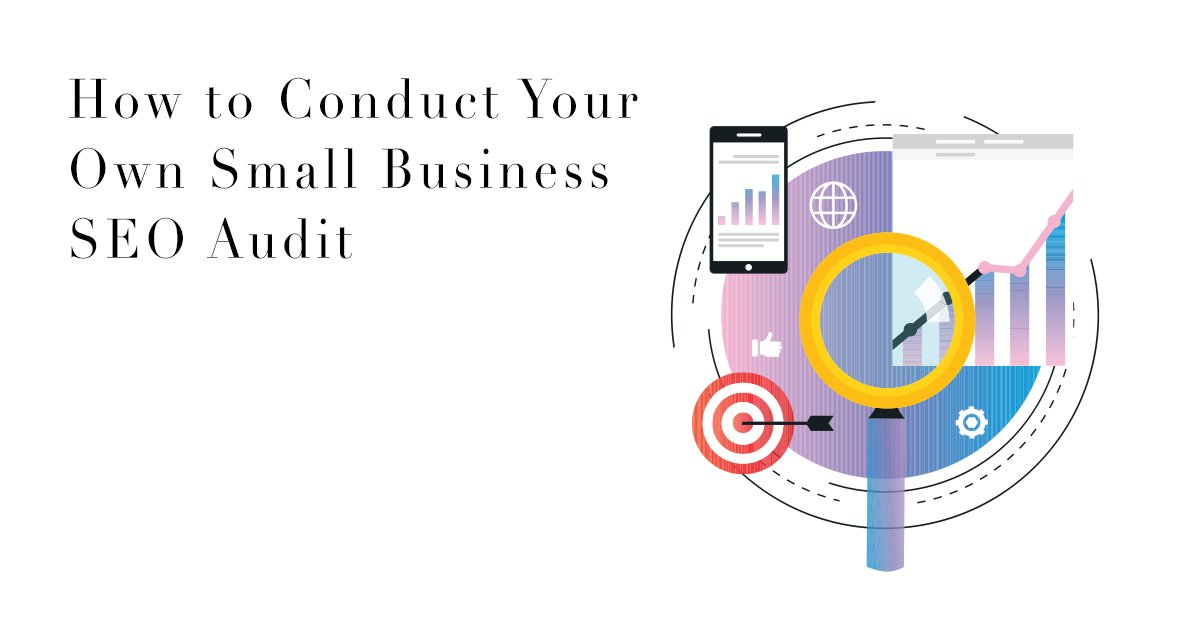When it comes to organic traffic, SEO is the best investment a business can make. Good SEO practices ensure that not only are you at the forefront of consumers’ minds but also at the top of Google’s search engine results when they need your services.
However, as with any other business goal or improvement, before you can move forward, you must first do an analysis of your past and current situation. With this in mind, when it comes to SEO for small businesses, sometimes hiring an SEO agency makes the most sense. Still, it can’t hurt to learn how to do an SEO audit on your own.
This guide will help you to build and improve on that skill. However, before you get started, do ensure you have access to the back-end of your website. You should also pull up any analytics software you may have access to. If your website is hosted on a platform like WordPress, you have access to basic data analytics that you may use as a starting point.
You will need about an hour to complete your SEO audit the first time, but it gets easier as you do it more and more regularly. We recommend completing an SEO audit at least quarterly to ensure your website and social media pages are all up-to-date.
What is an SEO Audit?
Before walking you through the process of how to do an SEO audit for your small business website, it’s important to understand what exactly an SEO audit is. An SEO audit refers to the process by which a website or brand is evaluated to see how well it meets the requirements that ensures it ranks highly in search engine results. Most SEO practices are specifically targeted for Google, because it tends to have the strictest guidelines but the best results. Here are some of the key factors you or an SEO agency may be on the lookout for when auditing your small business website.
- Keyword usage
- Content duplication
- Broken links
- Page loading speed
- Mobile optimization
- Bounce rate
- Quality of inbound and outbound links
- Site usability
The Benefits of an SEO Audit for a Small Business Site
If the SEO audit is starting to sound a little complicated, let’s bolster that confidence by showing you the payoffs for your hard work. In addition to fixing any of the issues identified above and bringing in higher traffic, here are some specific benefits you can expect to enjoy after completing an SEO audit and resolving all errors.
- Compared to other methods of bringing in traffic for your website, SEO is very affordable.
- If your website is monetized via ads, then higher volumes of website traffic will mean more ad revenue for you and your business.
- Building credibility is one of the biggest challenges for a small business, but people trust Google, so when Google ranks you high up on a search list, they are likely to trust your brand, too.
- Even though pay-per-click Google ads are listed at the top of every search result, in more than 70 percent of searches, users choose organic search results instead.
- The results from an SEO audit can be used to tailor other areas of your marketing strategy, as it may help you get a better understanding of the demographics you serve and how best to reach them.
Quick Tip: Putting an SEO strategy in place is only the first step. It doesn’t mean much if there is no audit to check its effectiveness.
What are Some of the Tools Necessary for an SEO Audit?
The number of tools you could use to make your SEO audit easier are countless. In fact, there are paid services where all you need to do is type in your URL and let software do the rest of the work for you. However, these tools are expensive and often miss the bigger picture. A brand is more than a collection of pages on a website. No one understands your brand better than you do, so here are some of the tools that will come in handy for your SEO audit.
- Google Analytics
- Google Search Console
- Google PageSpeed Insights
- Screaming Frog Crawler
- SEMRush
- Ahrefs
How to Perform an SEO Audit for Your Small Business
Now that you have a basic understanding of what you’ll be working on and what to expect, here is a step-by-step guide on how to complete an SEO audit for your small business from start to finish.
Step 1: Check for Google Penalties
If website traffic isn’t as great as it used to be, this could be due to a penalty from Google. To check if your website has been penalized, you will need to go to the Google search console and follow the steps below.
- Click the menu icon in the upper left-hand corner of the screen
- If you have multiple websites tied to this account, ensure you have selected the right one.
- Select Manual Actions and then Manual Actions, again.
The best-case scenario is that you see a green tick followed by “No issues detected.” If this is not the image you’re greeted with, find out as much as you can about why your website was penalized. Then, adjust your SEO practices to resolve the issue.
Step 2: Search for Your Business Online
This next step is fairly easy. All you have to do is type your business name into an online search bar and see what results come up. Theoretically, you can use any search engine you like to do this. However, when it comes to SEO, the one you should pay the most attention to without a doubt is Google. Why? Because Google owns 80 percent of the search engine market share, worldwide.
So, when you Google your business what will 80 percent of the world see? Here are a few things you should look out for.
- Whether or not your homepage ranks first in the search results
- Whether or not Google shows other relevant site links along with your business listing
- The accuracy of the description beneath your homepage and site links
- Whether or not you dominate the results of the first page
- Whether or not Google includes a Google Business Profile listing
- The accuracy of the name and other information on your Google Business Profile listing
Quick Tip: Once you have completed this exercise with Google, then you can move on to its competitors, such as Bing or Yahoo. If your website is built on WordPress, open the Stats tab, scroll down to Referrers, and click the down arrow next to Search Engines. It will show you which search engines refer traffic to your website.
Step 3: Crawl Your Website
To crawl your own website means to mimic the process Google’s spider bots use when they track specific factors about your site. These factors help to decide your small business website’s worthiness of a high ranking. Here are some of the many things Google’s spiders currently analyze:
- Titles
- Meta descriptions
- Broken links
- Inbound links
Crawling your website requires some technical knowledge and will therefore feature its own step-by-step instructions.
- Download a website crawler. Some of the many you can choose from are Screaming Frog, Moz Pro and DeepCrawl. For the purpose of this guide, we will use Screaming Frog. Screaming Frog is free as long as your website is comprised of 500 or less URLs.
- When downloading is complete, select the Default installation option and then click the Install button.
- Type your small business website’s URL address into the search bar and click the search icon to the right.
Step 4: Measure Your Website’s Speed
Screaming Frog does provide insights on the speed of your website. However, we recommend using Google’s PageSpeed Insights to get your information directly from the source. Simply type in the URL of your website and click Analyze. Google will then score your site on a scale of 1 to 100, followed by tips on how to achieve a faster website speed.
Fast load times improve user experience, which in turn increases engagement and helps to lower the bounce rate. In contrast, a slow load time can make it more difficult for search engines to crawl your website, which may lead to fewer of your pages being indexed. Websites that take a long time to load also fail to meet the main goal of mobile optimization: convenience.
Step 5: Complete an In-Depth Keyword Analysis
Keywords are no longer the main factor Google takes into consideration when ranking search results. Even so, keywords continue to play an important role in search engine optimization. After all, the words people type into a search bar must correspond with words on your web pages. Because of this, keywords still determine how well your website performs compared to your competitors. Because a keyword analysis can be complex, it will require its own steps.
- There are many websites that allow you to check the performance of keywords on your website. One that comes highly recommended by several SEO agencies is SEMrush. Simply type in the URL of your website, click the search button, and let it do all the hard work. Keep in mind that the service is not free, but you do receive ten free requests if you create an account. Thereafter, subscriptions are as low as $99.95. If your small business is currently paying for a subscription service with another SEO analysis tool, feel free to use that instead. As previously mentioned, WordPress sites may have some of the information on SEMrush already built in via the Stats page, accessible via the back-end of the website. For the purpose of this tutorial, we will assume you used SEMrush.
- Once you’ve secured access to the system, you should be able to view the organic keywords that are generating traffic for your website. Pay close attention to the ranking your website holds for these words. Remember, your goal is always to be in the top three results, but at the very least, you should be on the first page.
- Businesses don’t operate in a vacuum, so at the end of the day, you need to know how your competitors are faring with the same keywords. If competitors are ranking ahead of you, you are losing website traffic, leads, and sales to those businesses. Enter the keywords in the Google search bar to know who those competitors are. Then, enter the keywords with your location tag to see who your local competitors are.
Step 6: Evaluate Your Competitors’ Keyword Success
In this section of the guide, you will evaluate the content that beat your own to the top of Google’s list. Use the Find in Page function to locate the keyword you searched for. This will help you to understand what SEO formula your competitors have been using.
- Are keywords in the page and blog titles? Where in the titles do these appear?
- Are keywords in the subheadings used in the article?
- How many times are the keywords used?
- Is there a density level that is being maintained?
- Where in the body of the article are keywords used? Is one included in the first paragraph?
- Once you have completed this search, try to use the Find in Page function to search for one main word in the keyword, if it is a phrase. What, if any, stop words are used by the competitor?
Quick Tip: After completing your evaluation of this content, you now know what SEO formula Google uses to choose the best answers to your keyword queries. Use this information to adjust your own SEO tactics.
Step 7: Check Your Website for Duplicate Content
If you’ve worked with a PR or marketing agency before, then you’ve heard about the danger of duplication. It has been taught for many years that duplication of content will hurt your search results. However, Google is well aware that not all duplicated content is malicious and will simply rank one web page above the other.
This is an easy compromise when both web pages are your own. However, when one of those web pages is on another site, particularly one that has used your content without your permission, then you have a problem. Use Copyscape to check your website for duplication.
Quick Tip: If you find instances where portions of your website copy were used without your permission, take the opportunity to reach out to the site admin to have it removed. No one should have the right to make free use of the search engine optimized content you worked so hard to build.
Step 8: Check Your Social Media Pages
While we’re on the topic of social media, it’s a good idea to also check the platforms where your business boasts an active presence. This may include LinkedIn, Facebook, Twitter, Instagram and maybe Pinterest. If you’re wondering what social media has to do with SEO, it’s probably a good time to mention that social media can do a lot to boost your SEO practices.
When people love your content and share it with their followers, who then continue to share your tweets or Facebook posts with your website links, these count as inbound links to your website. If you’re looking for more information on this, a good book to check out is The B2B Social Media Book: Becoming a Marketing Superstar by Kipp Bodnar and Jeffrey L. Cohen.
Now that that’s settled, here are a few of the factors you should pay attention to when you extend your SEO audit to your social media pages. To reduce any likelihood of confusion, we will break them up into the appropriate categories.
LinkedIn:
- Number of mutual connections
- Number of people who view your profile on a regular basis
- Number of views your posts receive
- Amount of searches your personal or business page appears in
Facebook:
- Number of likes and follows on your Facebook business page
- Business review rating
- Number of people who have recommended your business
- Level of engagement of your followers
- Click-through rate on your ads
Twitter:
- Number of followers on your page
- Number of tweet impressions
- Number of profile visits
- Number of mentions
- The kind of content that becomes your top tweets
Instagram:
- Number of followers
- Number of page visits in the past week
- Average number of likes per photo
- Number of accounts reached
- Number of impressions
- Photos people engage with most
Step 9: Check the Spam Score of Your Backlinks
Despite the many ways of moving up the SEO line, backlinks remain the best way to rank higher in searches. Because of this, many SEO workers have unethically led clients to believe that the more the merrier was the be-all-end-all of backlinks. However, the quality of backlinks can also pose a problem for your brand. If the links are coming in from spammy sites, this may reflect poorly on your own small business website. Here’s how to check the health of the backlinks to your website.
- Create an account with Open Site Explorer.
- Type in the URL of your business and click the search icon.
- Click Inbound links in the left-hand tab and scroll down to see the inbound links to your website.
- Check the spam score or spam percentage of the websites linking in.
Step 10: Resolve Search Engine Optimization Issues
At the start of this guide, we detailed some of the many benefits you can expect to obtain from successfully completing an SEO audit. However, it’s impossible to realize all these benefits without resolving the issues and improving your SEO tactics. So, for the final step, here is a list of tips and fixes for some common SEO problems you may discover during your audit.
Enrich Thin Content
Thin content is one of the top reasons Google penalizes a website. Thin content refers to website copy or blog posts that offer little or no value and provide no information Google believes it can use. To remove the thin content penalty, you must either delete or flesh out thin posts on your website.
Improve Your Page Titles
Ideally, your page titles should include the main keyword used by your business, the location of your business, and the name of your company. It may be tempting to stuff page titles with as much information as possible, but try to ensure they are only about 60 characters in length.
Optimize Your Meta Description
When Google and other search engines list your website in search results, it will include information pulled from your meta description. Take advantage of the meta description for your overall website, individual pages, and blog posts, to boost your SEO. However, try not to get too carried away with keyword stuffing.
Revise Your URLs
Most people don’t often think about URLs in the day-to-day running of a business, even when it comes to SEO. However, the structure of your URLs could be the cause of low traffic on your small business website. Good URLs meet the following specifications.
- Are 244 characters or less, including the domain name
- Includes keywords, but is not packed with keywords
- Uses hyphens to separate the words, rather than jumble them all together
Include Geo-Tags
Some businesses operate virtually and need no physical address to bolster their online presence. However, if you have a physical business or provide products and services that are relevant to a particular area, it’s important to include geo-tags. These help to modify keywords to make them location-specific. For instance, instead of using “SEO agency” as keywords, you would use “SEO agency in Phoenix.” This helps your business to move up in the ranks for local SEO.
Install a Breadcrumb Menu
Google encourages all website admins to include a breadcrumb menu on their websites. And, as you probably noticed by now, if Google makes a request regarding your website, it is best to comply. If you’re wondering what a breadcrumb menu is, it’s a menu shown at the top of a page that helps users to find their way back to the home page. Aside from keeping Google happy, this inclusion in your website design makes it easier to navigate, thus making your customers happy, while helping to reduce the bounce rate.
Speed Up Your Website
WordPress websites can be notoriously slow. However, the good news is, there are many plugins for sale and for free that you can use to speed up your website. Below is a list of some of the most popular plugins for increasing loading speed.
- Hummingbird Page Speed Optimization
- Autoptimize
- Fast Velocity Minify
- Smush Image Compression and Optimisation
These plugins simply automate much of the advice Google dishes out via Google PageSpeed Insights. If you are not a WordPress user and will need to find other software to get the job done, here are some of the improvements Google may suggest.
- Eliminate render-blocking resources
- Serve images in next-gen formats
- Enable text compression
- Defer unused CSS
- Minify JavaScript
- Minify CSS
Secure Your Website
If your website is not yet up to HTTPS standards, it’s time to fix this. HTTPS is a ranking signal that indicates to the tech-savvy that your website has a secure certificate installed. Even better, it indicates this information to Google. This gives your website an edge over others that are not properly secured. Unsecured websites may often trigger a warning in your browser and may not load at all.
Pay Ahead for Your Website
Another key factor that Google looks at is how far ahead your website is paid for. According to the company’s patent with the US Patent and Trademark Office, more trust is afforded to websites that have paid up their domains years in advance, because they tend to be legitimate. Meanwhile, shady websites typically don’t use the same domain for more than one year. So, if you can afford to pay for your website domain several years in advance, Google may reward your website with a greater vote of trust.
Optimize Your Website for Mobile Use
There are many ways to optimize your website for mobile use, but these may require the assistance of a website developer. This is unless your website is hosted on WordPress or a similar platform. WordPress users can optimize their websites for smart phone use with a mere click of a button. In fact, most WordPress themes have mobile options. WordPress also offers an AMP version of websites, which is a much faster and more convenient way to browse on mobile devices.
Properly Handle Broken Links
Broken links can really hurt your SEO, and chances are, there are still some lurking somewhere on your site. Even if you clean them all up, error messages may still be generated by reference links via other sources to content that no longer exist on your website. When this happens, creating an appropriate 404 page is important. The two best approaches for an ideal 404 error page is to make it funny or informational. Informational pages should encourage users to either return to the home page or check out related results for their failed search.
Clean Up Outbound Links
Chances are, many of the web pages you linked to years ago in your early blogging and web-building days no longer exist. After gaining more experience with blogging, you should now be in a better place to discern and test for websites that you would rather not be linked to. Use Ahrefs or Open Link Explorer to test the quality of the outbound links you have used. Then, remove the ones that are no longer beneficial to your SEO.
Build High-Quality Inbound Links
Gaining a spot in the media is a daunting task and is usually left up to publicists who have built a strong relationship with journalists over time. However, that’s not to say there aren’t content creators on high-ranking websites who don’t need input from you and your business. And, you don’t need a publicist or a budget to reach out to them. It’s free. All you have to do is check your email and respond. Where can you find an amazing deal like this? Easy: HARO. Sign up for their newsletters here and start earning your own media placements, today.
Index Your Own Pages
Why wait for Google to do all the work for you? To ensure all the pages you want indexed are included in your Sitemap, create your own and send it to Google. If you own a WordPress site, WordPress tends to do this on your behalf, with no additional effort on your part.
However, for everyone else, or if you still prefer to control this process yourself, you can use web
crawlers like Screaming Frog to create your XML Sitemap and submit it to Google Webmaster. By taking control of this process yourself, you can direct Google to index only the pages that are properly optimized while excluding the others.
Claim Your Local Business Listings
The main local business listing you should be concerned with is the Google Business Profile listing provided by Google. Claim your business, verify that all the information is correct, and enjoy the improved SEO. However, Google is not the only platform that will list your business. There are many other websites at the local and international level that will create listings for your business. Check the information provided on these websites to ensure the information is correct. If it is not, follow the steps provided on the website to claim and edit the listing or message the admin directly.
Encourage Business Reviews
It’s one thing to show up in search results and another thing to look good while doing so. If you are a new business with no or few reviews, it doesn’t hurt to encourage customers and clients to review your business. You would be amazed at how many of your clients will happily take the time to review your business on Facebook or Google to help you improve your brand. If you sell a product, then you may need to offer an incentive. However, if you provide a service, what you need to focus most on is excellent customer care. That will make all the difference without costing you a cent.
Maximize on Social Media Branding
To really make the best of social media, it is best to take some important SEO factors into consideration when creating and managing your pages. Here are a few of the most important.
- Ensure your username matches your brand name as closely as possible. This increases the likelihood of your social media accounts showing up in Google searches when customers look up your business online.
- Create a hashtag for your business that is close to your business name. This also increases the likelihood of your social media accounts showing up in Google searches.
- Use your keywords when posting on social media, both in the body and as relevant hashtags.
- Do more than post on social media. When possible, interact with your followers. Engaged followers are more likely to pay attention to your social media posts and share them on their own feed.
Create a Contact Us Page
It’s incredible how many online businesses fail to either create or optimize a contact us page on their website. Even worse, often when these pages are created, the email addresses are now defunct and no one monitors the inbox for the contact form. Thus, while the business is working hard to generate leads, it has cut off one of the main ways in which it can convert those leads into sales.
Always make it easy for your customers and clients to reach you. Optimize your contact us page to include as much contact information as you can, but do not include contact methods you know you will not keep up with. For example, a chat box is pointless if there isn’t an agent at the ready to respond to queries.
Create Terms of Use and Privacy Pages
Chances are that your small business must handle personal data at some point. This may include credit card information, email addresses, home locations, and business data. Clients and customers are becoming increasingly aware of and concerned about how their information is collected, stored, used and potentially sold. Having a Terms of Use and Privacy Page helps to alleviate those concerns, or otherwise provides a legal disclaimer to protect your business.
Add a Copyright Notice
Most websites use a copyright symbol, even when the website is not actually registered as copyrighted material. However, you should also consider adding a copyright notice. A copyright notice lets users know how much of your content is appropriate to use and how best to credit your website if they do. It also helps to discourage plagiarism.
Hire Search Engine Optimization Professionals
Starting to feel overwhelmed? You’re not alone. Sometimes, even the most detailed guides are not enough to learn in one sitting how to do an SEO audit without professional help. Because of this, business owners across the United States turn to our experts at V Digital Services to handle the technical details of SEO for small businesses.
So, if DIY tactics just aren’t doing the trick, hire our team to complete your SEO Audit and to fix the discovered errors. For more information on how we can work with you to improve your ranking and further complement your marketing strategy, contact us today! We look forward to helping you navigate the complex digital landscape.






 PREVIOUS
PREVIOUS